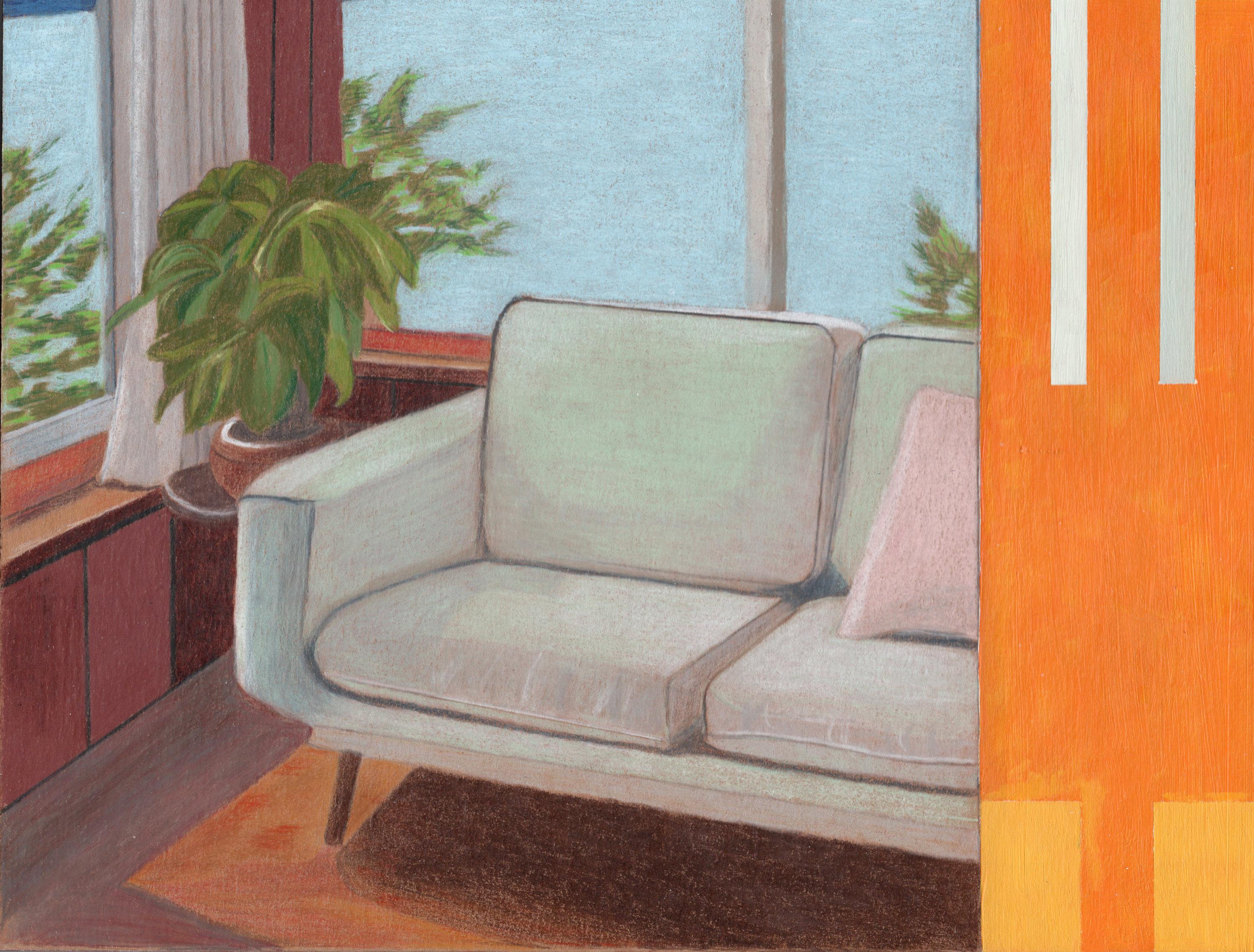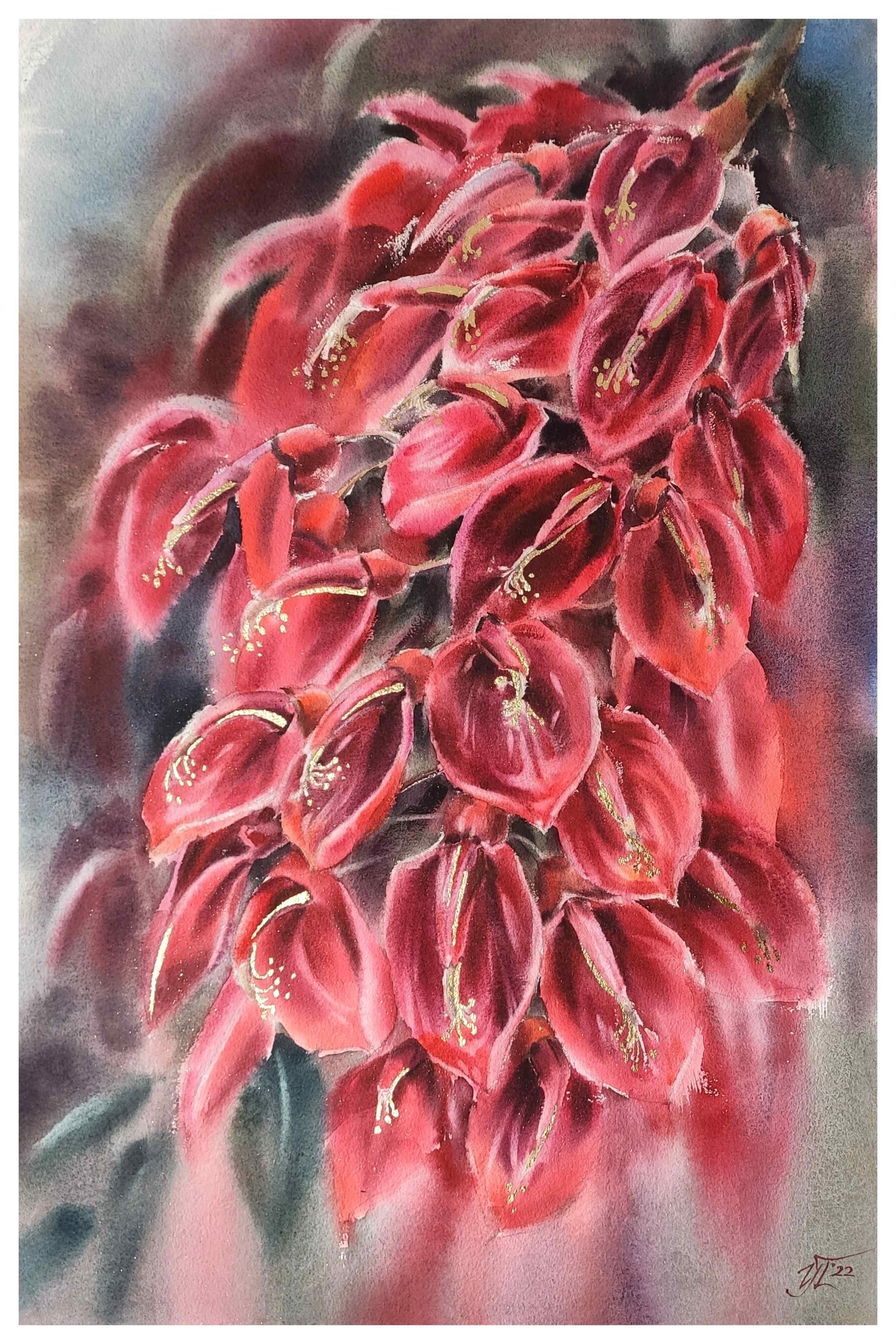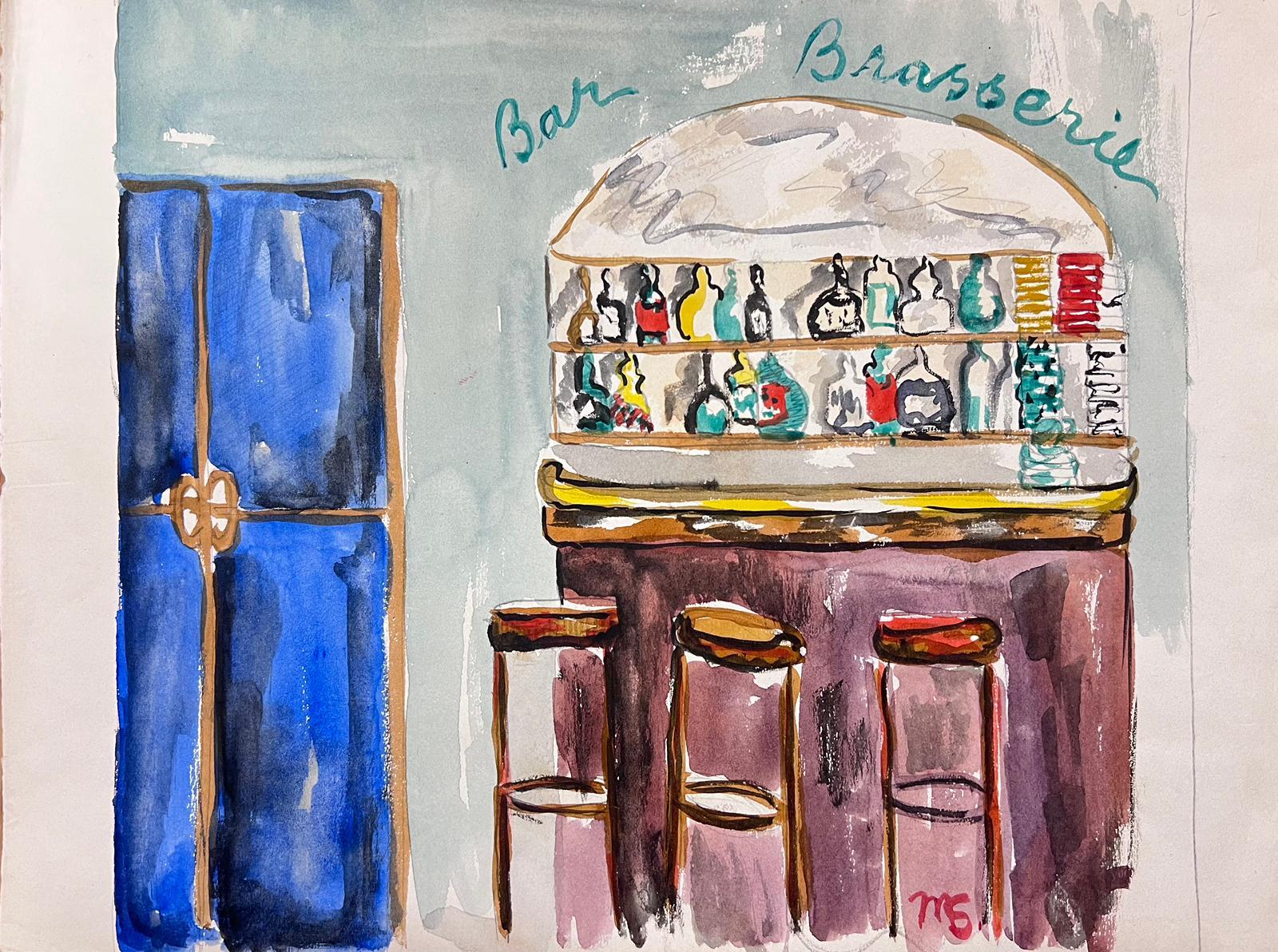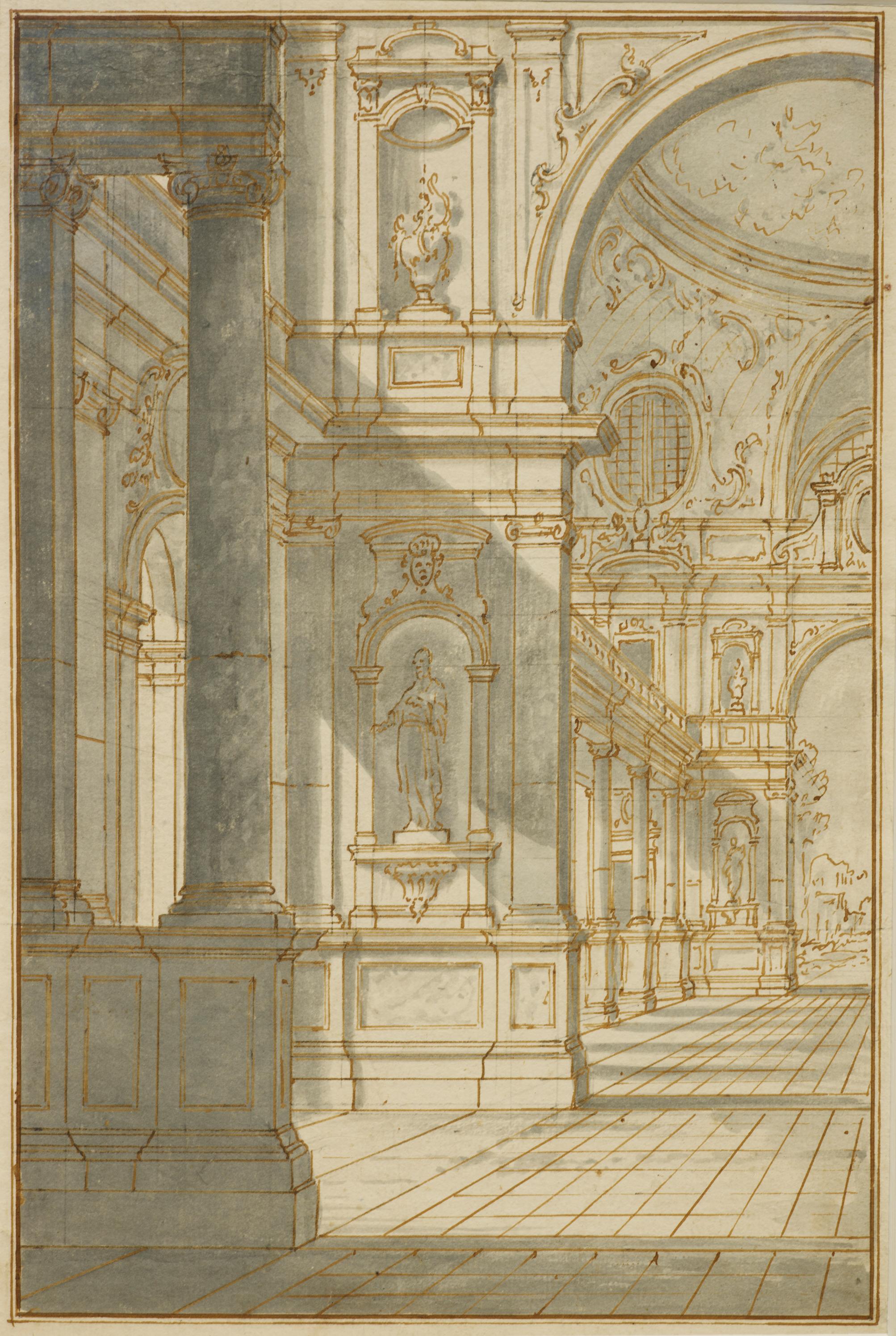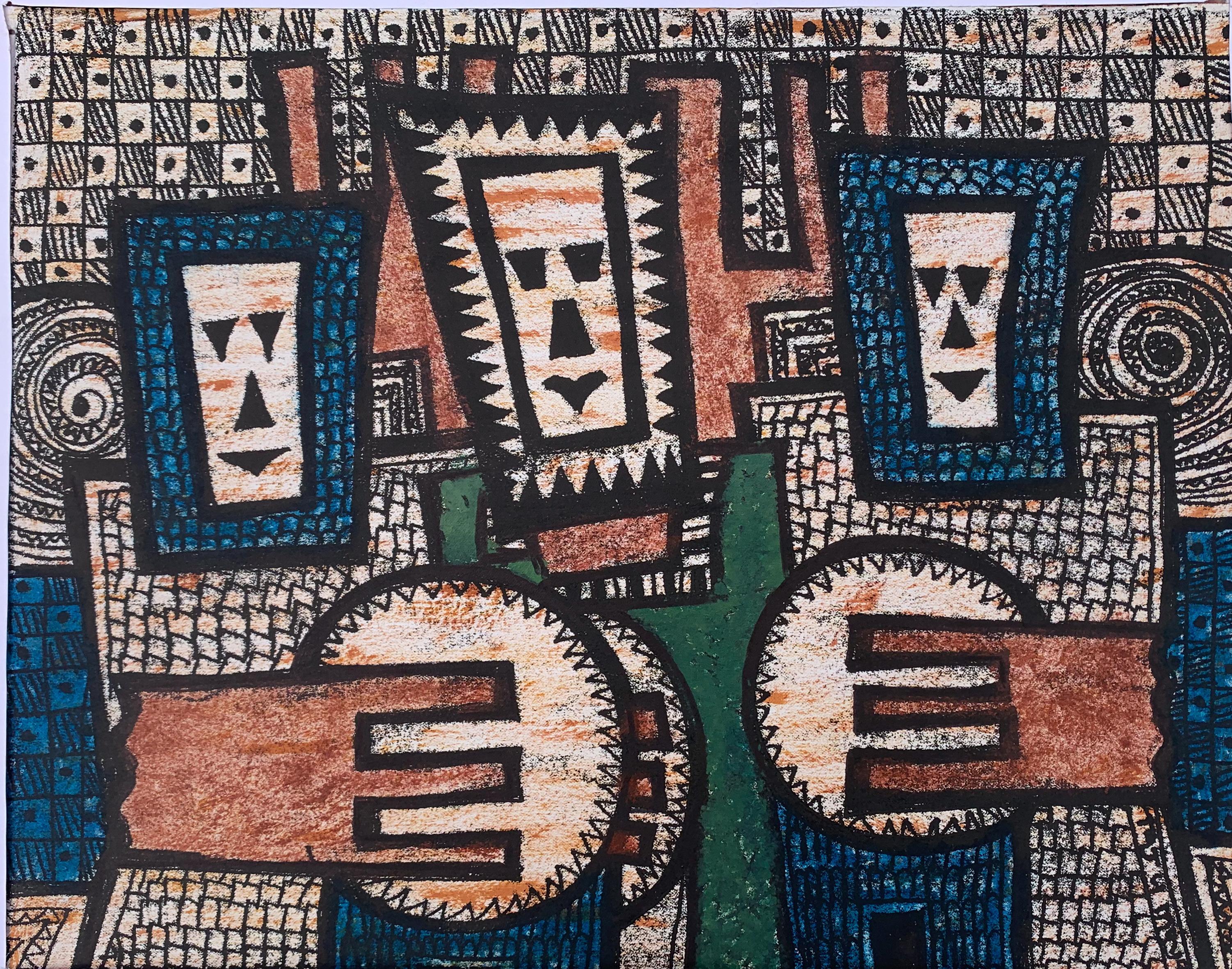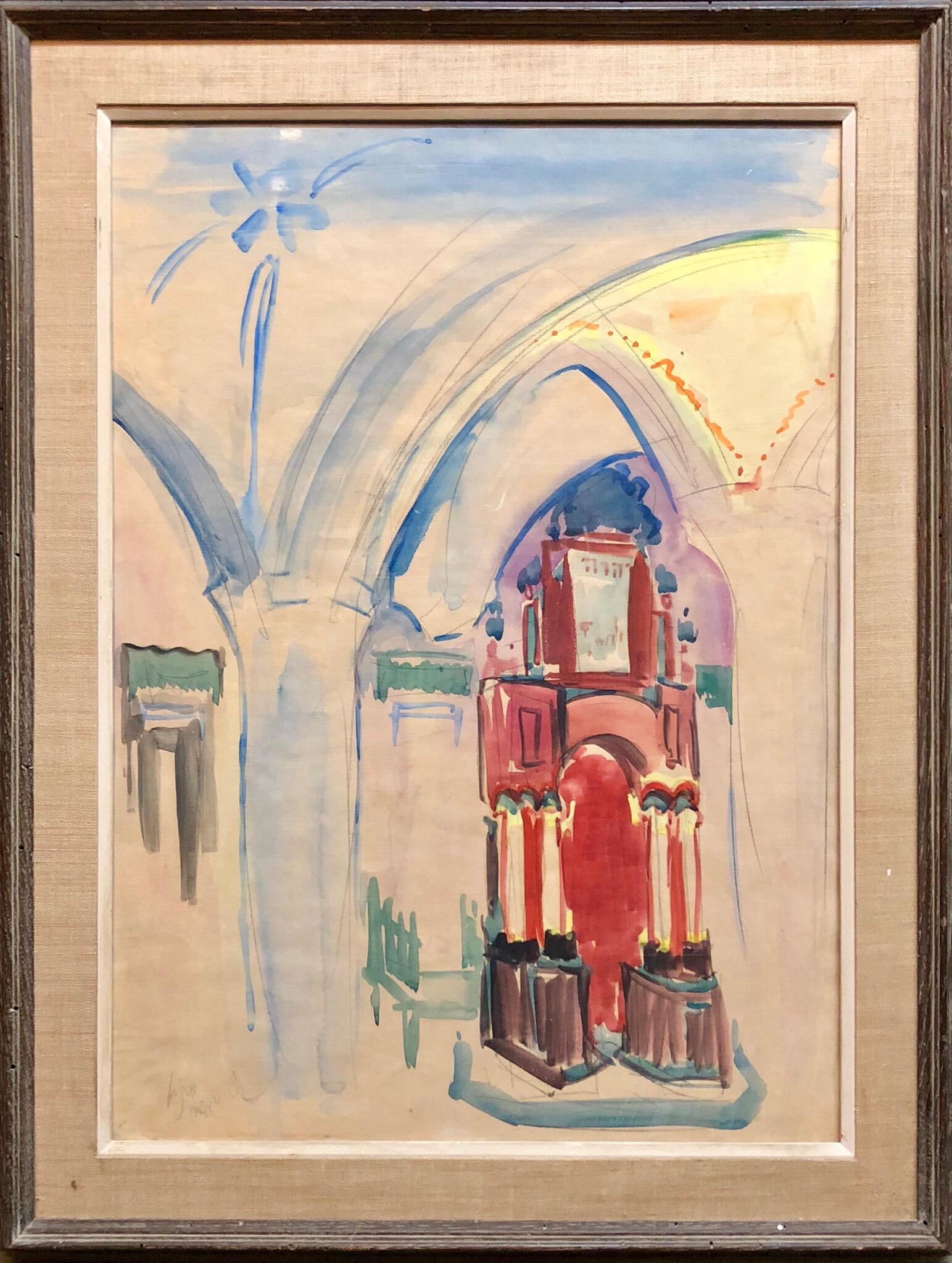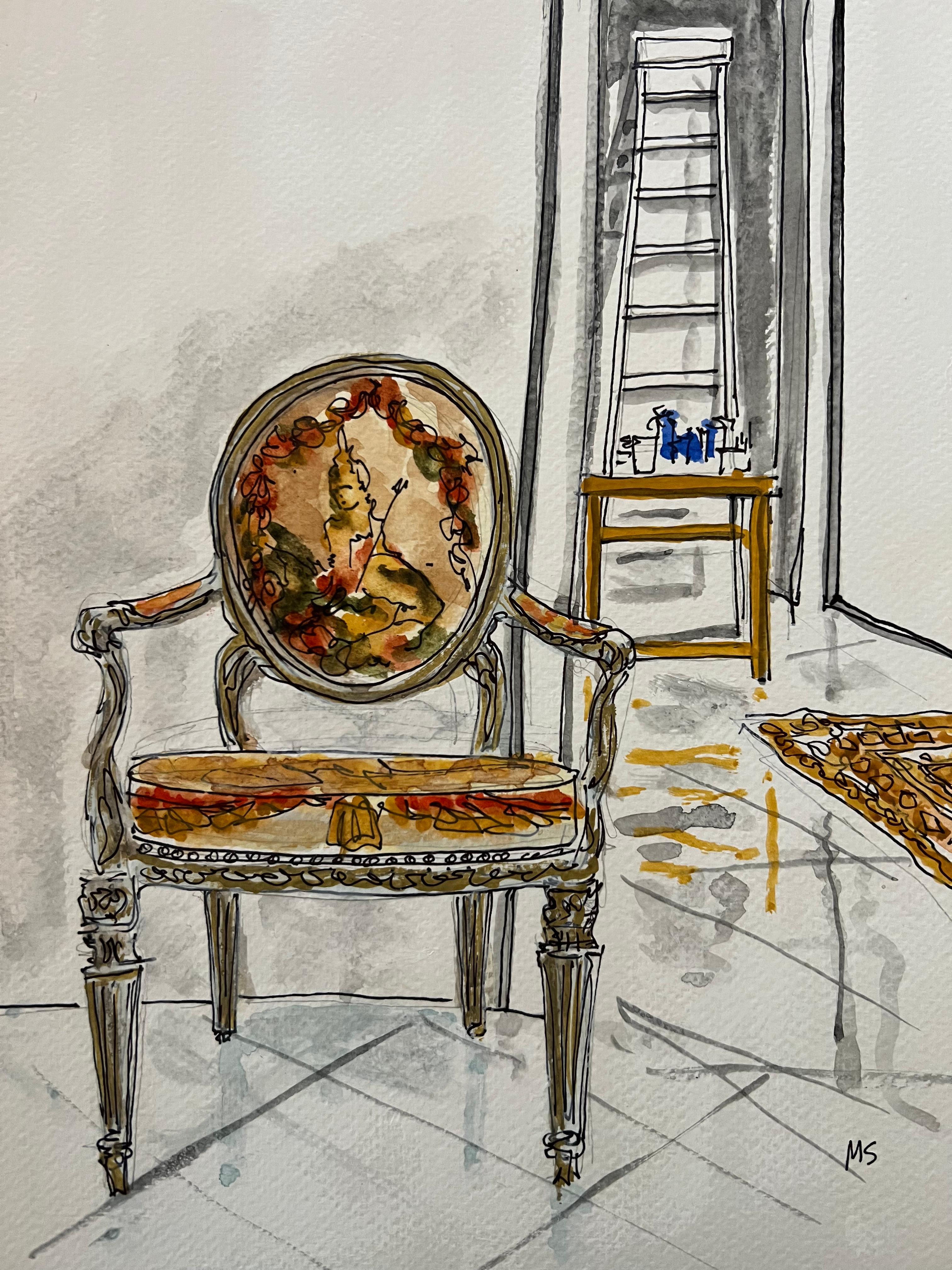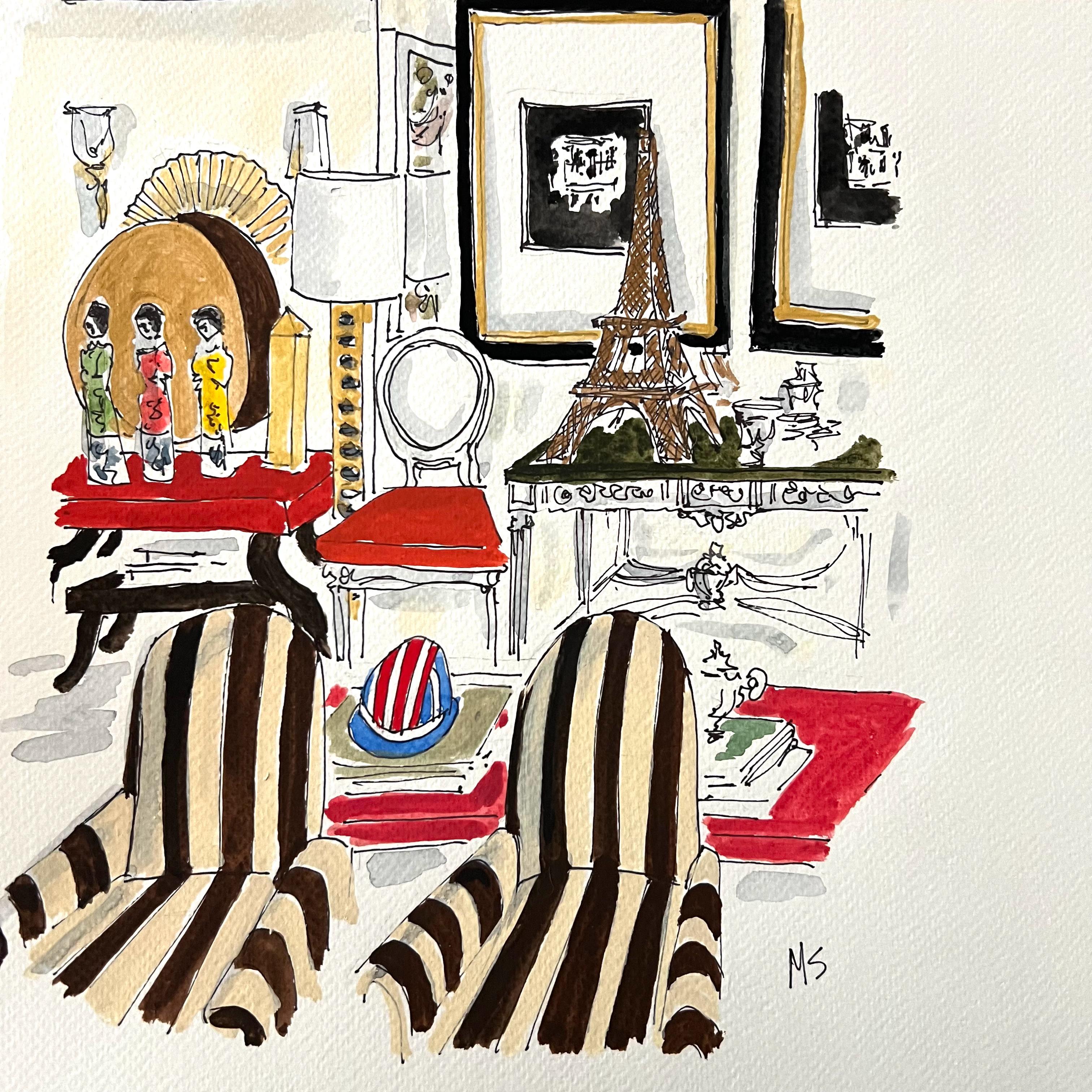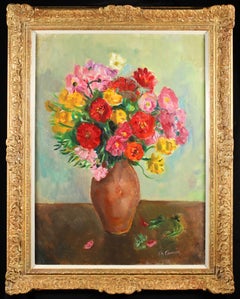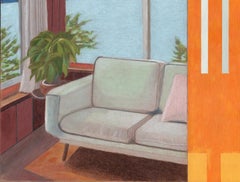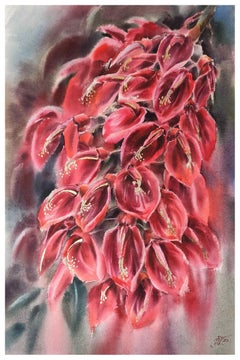
L'abat-jour jaune - Nabis Pastel, Study of Interior by Edouard Vuillard
View Similar Items
Edouard VuillardL'abat-jour jaune - Nabis Pastel, Study of Interior by Edouard Vuillard1924
1924
About the Item
- Creator:Edouard Vuillard (1868-1940, French)
- Creation Year:1924
- Dimensions:Height: 15.5 in (39.37 cm)Width: 18 in (45.72 cm)
- Medium:
- Movement & Style:
- Period:
- Condition:Very good original condition.
- Gallery Location:Marlow, GB
- Reference Number:Seller: LFA2851stDibs: LU41537349272
Edouard Vuillard
French artist Edouard Vuillard was known for depicting intimate glimpses of Parisian life around the turn of the 20th century. His figurative prints, drawings and figurative paintings were concerned not just with their subjects but with the private surroundings of their homes and gardens. Vuillard was strongly influenced by Postimpressionist painters like Paul Gauguin.
Vuillard was born in the French commune of Cuiseaux in 1868. His family moved to Paris in 1877, and six years later, he received a scholarship to study at the prestigious Lycée Fontaine (now called the Lycée Condorcet). He graduated in 1885, joined the studio of painter Diogène Maillart and enrolled in courses at Académie Julian. Two years later, he was also accepted to the École des Beaux-Arts.
In 1889, the young Vuillard began meeting with a group of Symbolist painters and mystics known as Les Nabis (the prophets). For the subsequent decade, he was a prominent member of the group. During this period, Les Nabis and Vuillard himself were influenced by Japanese woodblock prints, featuring a blending of shapes and colors and a shallow depth of field. Any figures in the paintings seemed to meld into the background, and the loose brushwork prefigured the advent of abstract art.
Les Nabis broke up in 1900, and Vuillard's work took on a brighter and more colorful appeal. He turned his attention to painting gardens, joining a rich tradition of French garden painters. Vuillard was nominated for the Légion d'honneur in 1912, but he refused on the grounds that he did not seek compensation for his work other than the esteem of people with good taste.
After a brief stint in the military during World War I, Vuillard returned to life as a painter. In the 1920s, he was commissioned for portrait paintings by prominent Parisians like director Sacha Guitry, the Contesse Marie-Blanche de Polignac and fashion designer Jeanne Lanvin.
Throughout the 1930s, Vuillard received numerous commissions from the French government. In 1938, he had a major retrospective at the Musée des Arts Decoratifs and was elected to the Académie des Beaux Arts. He died in 1940, at the age of 71.
On 1stDibs, find Edouard Vuillard prints, drawings and paintings.
- Bouquet de tulipes et de pivoines - Impressionist Still Life Oil by Leon DetroyBy Leon DetroyLocated in Marlow, BuckinghamshireSigned still life oil on canvas circa 1930 by French impressionist painter Leon Detroy. The work depicts a bronze vase filled with tulips in an array of autumnal colours, and peonies...Category
1930s Impressionist Still-life Paintings
MaterialsCanvas, Oil
- Fleurs au pot de gres rose - Fauvist Still Life Oil Painting by Charles CamoinBy Charles CamoinLocated in Marlow, BuckinghamshireSigned still life oil on canvas by French expressionist and fauvist painter Charles Camoin. The work depicts a bright bouquet of flowers in reds, yellows, blues and pinks in a stoneware vase. Signature: Signed lower right Dimensions: Framed: 36"x28" Unframed: 29"x21" Provenance: Galerie Marcel Bernheim Exhibitied: Paris, Galerie Druet, March 1929, n°23 This work is included in the Archives Camoin and a certificate from Madame Grammont-Camoin is available on request Charles Camoin was the son of a paint manufacturer in Marseilles who died when Charles was six years old. His mother travelled extensively, absenting herself for long periods at a time, and Camoin's studies suffered accordingly. At 16, he enrolled at a commercial college in Marseilles, but also attended courses at the École des Beaux-Arts, where he was awarded a first prize for drawing and composition. In 1896, at the age of 17 (or in 1898 according to other, possibly more reliable sources), Camoin moved to Paris where he was admitted to Gustave Moreau's class at the École des Beaux-Arts, shortly before the latter's death. He soon left on his travels in the company of Albert Marquet - no doubt following Moreau's advice to 'go and paint buses', his recommendation to the two artists to search out their subject matter on the streets and in the cabarets of Paris. During his short time in Moreau's class Camoin made a number of lasting friendships, notably with artists who would go on to pioneer Fauvism: Henry Manguin, Georges Roualt and, in particular, Jean Puy and Henri Matisse, with whom he exchanged letters on a regular basis.In 1900, Camoin did his military service, first in Arles, where he painted compositions inspired by Van Gogh motifs, then in 1902 in Aix, where he frequently met with Cézanne, with whom Camoin maintained a life-long correspondence and whose advice and counsel he cited repeatedly. In 1903, Camoin exhibited for the first time - at the Salon des Artistes Indépendants in Paris. The following year (1905), he met Claude Monet (at Cézanne's instigation and, appropriately perhaps, underneath Giverny's Nympheas); he then held his first solo exhibition at the Berthe Weill Gallery in Paris. In 1905, Camoin exhibited alongside the 'Animals' at that year's Salon d'Automne, although it must be said that he did not share the graphic and chromatic violence of a Matisse or a Derain...Category
1920s Impressionist Still-life Paintings
MaterialsCanvas, Oil
- Old Men with Kittens - Impressionist Oil, Figures in Interior by J F RaffaelliBy Jean-Francois RaffaelliLocated in Marlow, BuckinghamshireA wonderful oil on panel by French impressionist painter Jean-Francois Raffaelli depicting two old men seated in an interior. One is reading his paper as the other naps and there are several kittens on the floor. Painted in the artist's distinctive style. The work is accompanied by a certificate from Brame & Lorenceau and is included in the catalogue raisonne of the painter. Signature: Signed lower left Dimensions: Framed: 9.5"x8" Unframed: 5.5"x4" Provenance: Private collection - United States Original artists label verso Jean-François Raffaëlli's father was a failed Italian businessman and Raffaëlli himself was, among other things, a church chorister, actor and theatre singer. He then studied under Gérôme at the École des Beaux-Arts in Paris. He travelled to Italy, Spain and Algeria and on his return to France settled in Asnières. In 1876, on a trip to Brittany, he first saw the potential of realist subject matter, if treated seriously. He became involved in meetings of artists at the Café Guerbois, where the Impressionist painters used to gather. As a result, Degas, contrary to the advice of the group, introduced Raffaëlli to the Impressionist exhibitions - according to one uncertain source as early as the very first exhibition, at the home of Nadar, and certainly to those of 1880 and 1881. In 1904, Raffaëlli founded the Society for Original Colour Engraving. He first exhibited at the Salon de Paris in 1870 and continued to exhibit there until he joined the Salon des Artistes Français in 1881, where he earned a commendation in 1885, was made Chevalier of the Légion d'Honneur in 1889 and in the same year was awarded a gold medal at the Exposition Universelle. In 1906 he was made Officier of the Légion d'Honneur. He was also a member of the Société Nationale des Beaux-Arts. In 1884, a private exhibition of his work cemented his reputation. He contributed to several newspapers such as The Black Cat (Le Chat Noir) in 1885 and The French Mail (Le Courrier Français) in 1886 and 1887. He published a collection entitled Parisian Characters, which captured his favourite themes of the street, the neighbourhood and local people going about their lives. In 1880 he participated, with Forain, on the illustration of Joris Karl Huysmans' Parisian Sketches (Croquis Parisiens). He also illustrated Huysman's Works. As well as working as an illustrator, he also made etchings and coloured dry-points. His early attempts at painting were genre scenes, but once he was settled in Asnières he started to paint picturesque views of Parisian suburbs. From 1879 onwards, his subject matter drew on the lives of local people. These popular themes, which he treated with humanity and a social conscience, brought him to the attention of the social realist writers of the time such as Émile Zola. In addition to his realist style, Raffaëlli's dark palette, which ran contrary to the Impressionist aesthethic, helped to explain the opposition of those painters to his participation in their exhibitions. More concerned with drawing than colour, he used black and white for most of his paintings. Towards the end of his life, he lightened his palette, but without adopting any other principles of the Impressionist technique. After painting several portraits, including Edmond de Goncourt and Georges Clémenceau, he returned to genre painting, particularly scenes of bourgeois life. Later in his career, he painted mainly Breton-inspired sailors and views of Venice. His views of the Paris slums and the fortifications, sites which have almost completely disappeared, went some way towards establishing a genre in themselves and perpetuated the memory of the area: The Slums, Rag-and-Bone Man, Vagabond, Sandpit, In St-Denis, Area of Fortifications. His realistic and witty portrayal of typical Parisian townscapes accounts for his enduring appeal. Born in Paris, he was of Tuscan descent through his paternal grandparents. He showed an interest in music and theatre before becoming a painter in 1870. One of his landscape paintings was accepted for exhibition at the Salon in that same year. In October 1871 he began three months of study under Jean-Léon Gérôme at the École des Beaux-Arts in Paris; he had no other formal training. Raffaëlli produced primarily costume pictures until 1876, when he began to depict the people of his time—particularly peasants, workers, and ragpickers seen in the suburbs of Paris—in a realistic style. His new work was championed by influential critics such as J.-K. Huysmans, as well as by Edgar Degas. The ragpicker became for Raffaëlli a symbol of the alienation of the individual in modern society. Art historian Barbara S. Fields has written of Raffaëlli's interest in the positivist philosophy of Hippolyte-Adolphe Taine, which led him to articulate a theory of realism that he christened caractérisme. He hoped to set himself apart from those unthinking, so-called realist artists whose art provided the viewer with only a literal depiction of nature. His careful observation of man in his milieu paralleled the anti-aesthetic, anti-romantic approach of the literary Naturalists, such as Zola and Huysmans. Degas invited Raffaëlli to participate in the Impressionist exhibitions of 1880 and 1881, an action that bitterly divided the group; not only was Raffaëlli not an Impressionist, but he threatened to dominate the 1880 exhibition with his outsized display of 37 works. Monet, resentful of Degas's insistence on expanding the Impressionist exhibitions by including several realists, chose not to exhibit, complaining, "The little chapel has become a commonplace school which opens its doors to the first dauber to come along."An example of Raffaëlli's work from this period is Les buveurs d'absinthe (1881, in the California Palace of Legion of Honor Art Museum in San Francisco). Originally titled Les déclassés, the painting was widely praised at the 1881 exhibit. After winning the Légion d'honneur in 1889, Raffaëlli shifted his attention from the suburbs of Paris to city itself, and the street scenes that resulted were well received by the public and the critics. He made a number of sculptures, but these are known today only through photographs.[2] His work was also part of the painting event in the art competition at the 1912 Summer Olympics. In the later years of his life, he concentrated on color printmaking. Raffaëlli died in Paris on February 11, 1924 Museum and Gallery Holdings: Béziers: Peasants Going to Town Bordeaux: Bohemians at a Café Boston: Notre-Dame; Return from the Market Brussels: Chevet of Notre-Dame; pastel Bucharest (Muz. National de Arta al României): Market at Antibes; Pied-à-terre Copenhagen: Fishermen on the Beach Douai: Return from the Market; Blacksmiths Liège: Absinthe Drinker...Category
1890s Impressionist Figurative Paintings
MaterialsPanel, Oil
- Cottage at Sundown - Impressionist Oil, Landscape at Sunset by Henri DuhemBy Henri DuhemLocated in Marlow, BuckinghamshireSigned and dated impressionist oil on panel landscape by French painter Henri Duhem. The work depicts a view of a cottage in a rural landscape. Smoke escapes the chimney and contrast...Category
1910s Impressionist Landscape Paintings
MaterialsPanel, Oil
- A Breton Interior - Impressionist Interior Oil Painting by Edouard CortesBy Édouard Leon CortèsLocated in Marlow, BuckinghamshireSigned figures in interior oil on canvas circa 1910 by sought after French impressionist painter Edouard Leon Cortes. This charming and nostalgic work depicts a family enjoying dinne...Category
Early 20th Century Impressionist Interior Paintings
MaterialsCanvas, Oil
- Early Evening - Brittany - Impressionist Interior Oil Painting by Edouard CortesBy Édouard Leon CortèsLocated in Marlow, BuckinghamshireSigned figures in interior oil on canvas circa 1925 by sought after French impressionist painter Edouard Leon Cortes. This charming and nostalgic work depicts a family in a typical B...Category
Early 20th Century Impressionist Figurative Paintings
MaterialsCanvas, Oil
- Fenêtre sur lac, Original Painting, Still-Life, Interior Scene, Ready to hangLocated in AIX-EN-PROVENCE, FROil painting and Oil based color pencils on Archival Cardboard 2mm - Original Painting and Drawing, Still-Life, Interior, Ready to hang Work Title : Fenêtre sur lac (EN : Window on lake) Artist : Gabriel Riesnert...Category
21st Century and Contemporary Contemporary Interior Paintings
MaterialsCardboard, Oil, Oil Crayon
- Red tropical flowers Watercolor painting Golden elementsLocated in Zofingen, AGA watercolor painting with golden foil in the interior. A watercolor painting for the interior with bright tropical flowers of Eritrea, decorated with golden foil. Saturated, contras...Category
2010s Impressionist Interior Drawings and Watercolors
MaterialsFoil
- Royal orchid Floral watercolor painting for living roomLocated in Zofingen, AGThe painting for interior Royal Orchid is a delicate, refined watercolor made on cotton paper with multifaceted granulating shades. Beautiful orchid flowers on a platter surrounded b...Category
2010s Impressionist Interior Paintings
MaterialsPaper, Watercolor
- Rose bouquet Watercolor Roses AquarelleLocated in Zofingen, AGBeautiful painting for the living room. Watercolor painting in soft colors for the bedroom. Painting with roses for the bedroom interior. Interior painting with roses. Delicate watercolor in pure coral shades with garden roses. Rose is truly the queen of flowers. It has tenderness, versatility and beauty of the inflorescence. And how it smells! Watercolor painting with roses is always a pleasure to look at, admiring the tenderness and sophistication of the shades. This floral painting was created based on the impression of a walk through my mother's rose garden. The painting with roses will fit perfectly into both modern and classic interiors. Watercolor painting is a wonderful gift for a celebration or anniversary. Size: 38x56cm Author: Irina Pronina...Category
2010s Impressionist Interior Drawings and Watercolors
MaterialsWatercolor, Paper
- French Watercolour Painting Colourful Parisian BarLocated in Cirencester, GloucestershireFrench Bar original watercolour painting on artist paper signed by Marjorie Schiele (1913-2008) *see notes below piece of paper is 9.5 x 12.5 inches I...Category
Early 20th Century American Impressionist Interior Paintings
MaterialsWatercolor
- Mid Century French Illustration Of Colourful Flower Wallpaper SketchLocated in Cirencester, GloucestershireWallpaper Sketch by Josine Vignon (French 1922-2022) pastel/watercolor paper, unframed painting: 19 x 25 inches good condition provenance: from the artists estate, France Josine Vi...Category
Mid-20th Century Post-Impressionist Interior Drawings and Watercolors
MaterialsWatercolor, Oil Pastel
